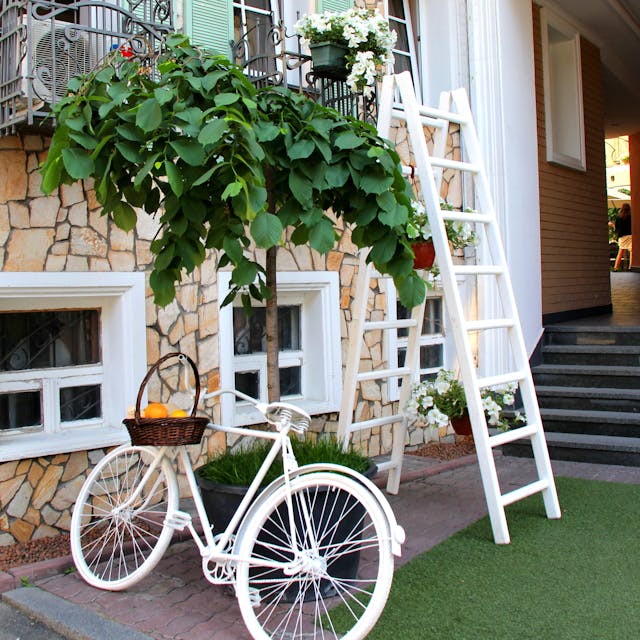How You Can Create A Mediterranean Garden Escape For Your Home

Whether you’ve just moved home or have noticed that your garden is lacking in colour and is in need of a little refresh, getting together a few ideas as to how you can overhaul and update your garden before spring begins means that you can have a fabulous new garden just in time for the summer.
One garden trend which is continuing to pick up the pace is Mediterranean garden designs. With a classic mix of fragrant and colourful plants and flowers, stylish rustic furniture and stunning feature designs, these gardens work surprisingly well in a mixture of different climates. With a relaxed and informal vibe, Mediterranean gardens are loved for their familiar look which so many of us associate with nostalgic memories of holidays and exotic locations.
With a particular emphasis on outdoor dining and living, particularly when it comes to entertaining, creating a Mediterranean garden in your home space is a great way to ensure that you spend more time relaxing in your garden this summer. Thanks to their relaxed style, Mediterranean gardens often need little maintenance, fully emulating the way of life.
If you’ve recently been thinking about updating or refreshing your garden space, no matter how big or small it is, here are some ways you can implement the design into your space.
Choosing Your Plant Style
A great place to start with any garden design is your choice of plants and flowers. You can use plants as a nod towards your overall theme, but you can also use them to create the basis for your new garden structure.
With Mediterranean gardens, think bright and colourful flowers in terracotta pots and climbing plants crawling up wooden frames and walls. These gardens also smell as good as they look, so be sure to pick plants and flowers for their fragrance as well as their colours. Olive trees are a great addition to a Mediterranean garden, as they work well in any shape and size whether as a focal point or nestled against walls and frames.
Whilst fruit trees are unlikely to bear fruit away from the Mediterranean weather, their leaves and fragrance are emphatic of warmer, far away climates. Other plants which work well in a Mediterranean styled garden include:
Water Features and Pergolas
Functionality is hugely important when it comes to Mediterranean gardens and protection from elements, in the form of cooling water and shade, is a must. On the Mediterranean coast, many gardens need shelter from the direct sun, so you will likely see a lot of canopies, pergolas and water features. Pergolas do a great job when it comes to sheltering gardens from strong winds and, if your garden is overlooked, they also offer privacy.
If you have space, then pergolas which are draped in colourful climbing plants, such as ipomoea and jasmine, are a must. But, if you have a smaller garden, then you may want to think about using small entrance archways, or even just some high fencing, for the look. In typical Mediterranean style, you should avoid leaving walls, fences and trellises bare – Mediterranean gardens grow upwards just as much as they grow outwards, so climbers and luxurious draping canopy trees should be used where possible.
Although water features aren’t an essential part of Mediterranean gardens, they are a lovely finishing touch and do a great job when it comes to breaking up dry landscapes. Small rustic water features mounted against a wall will add a satisfying bubbling sound to your garden, whilst ornament pools add some shimmer and movement to your garden.
Relaxed Outdoor Dining
In the Mediterranean, it is almost a criminal offence to not have an outdoor dining area. Sharing food with family and friends is something which sits at the heart of long-standing Mediterranean tradition and whilst we may not have as good a weather as in the Med, many of us still treasure summer BBQs with ready to drink cocktails, relaxing in the garden on long summer evenings.
You should, ideally, choose a classic dining set. Cast aluminium works well as it is weather resistant so can be left out over winter. If you don’t have the room for a large dining set, then a small bistro set will work just as well and often is made up of just a coffee table and chairs. If you have a bigger space, then make sure that there aren’t any sections of your garden which can be enjoyed – Mediterranean gardens often have many types of seating dotted around paths and walkways.
Mosaics and Paving
Landscaping is an integral part of Mediterranean gardens and is often broken up by splashes of bright, vibrant colour in the form of mosaics or tiling. Many Mediterranean gardens choose paving stones and gravel in favour of lawns, which means that this is a great choice for smaller gardens or those who don’t want the hassle of keeping up with lawn maintenance.
Choose warm coloured paving stones, such as in red and pink hues, and natural stone and gravel is the perfect way to encorporate this look. Without a lawn, you may find that your garden feels as though there is a lot of vacant space, so you could also split your garden into different sections using paths and walkways lined with scented and colourful herbs and plants.
So, whether you’re looking to copy the styles visible on pinterest or create your own Grecian hideaway, there are plenty of ways in which you can create a whole Mediterranean garden escape, or even just incorporate small parts into your current garden design to refresh the space.
